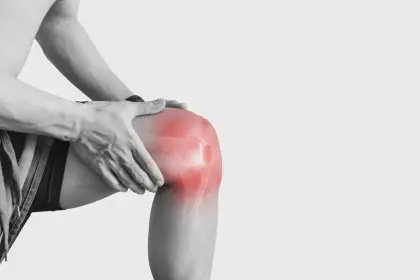Athletic participation brings countless benefits, from cardiovascular health to mental wellbeing, but certain sports carry significantly higher risks for joint injuries that can impact mobility for years to come. Understanding which activities pose the greatest threats to joint health helps athletes make informed decisions about participation and prevention strategies.
The human body’s joints serve as complex mechanical systems that absorb tremendous forces during athletic activities. When these forces exceed the joint’s capacity or occur in unnatural directions, injuries ranging from minor sprains to devastating tears can result. Some sports create perfect storms of risk factors that make joint injuries not just possible, but probable over time.
1. Football dominates joint injury statistics
Football stands as the undisputed leader in joint-related injuries across all age groups and skill levels. The sport’s combination of high-speed collisions, sudden direction changes, and contact between players creates multiple pathways to joint damage. Knee injuries occur with alarming frequency, particularly anterior cruciate ligament tears that can end careers and require extensive rehabilitation.
The shoulder joints face constant assault in football through tackling, blocking, and falling impacts. Rotator cuff injuries, shoulder dislocations, and labral tears represent common consequences of the sport’s physical demands. Ankle injuries occur when players plant their feet during cuts and turns, especially on artificial surfaces that provide excessive grip.
Hip joints endure significant stress from the explosive movements required in football. The repetitive nature of sprinting, cutting, and collision impacts creates wear patterns that can lead to early-onset arthritis and mobility limitations later in life. The weight of protective equipment adds additional stress to all joint systems throughout the body.
2. Basketball creates perfect conditions for joint damage
Basketball’s rapid pace and jumping requirements place enormous stress on lower body joints, particularly knees and ankles. The sport demands constant acceleration, deceleration, and directional changes that challenge joint stability. Landing from jumps on hardwood surfaces transmits significant forces through the entire kinetic chain.
Knee injuries in basketball often result from non-contact situations where players land awkwardly or pivot while their foot remains planted. The meniscus, which provides cushioning between leg bones, frequently tears during these movements. Patellofemoral pain syndrome affects countless basketball players as the kneecap tracks improperly during repeated jumping and landing cycles.
Ankle sprains represent the most common basketball injury, occurring when players land on opponents’ feet or lose balance during aggressive play. These seemingly minor injuries can lead to chronic instability if not properly rehabilitated. The repetitive jumping required in basketball also creates overuse conditions in the Achilles tendon and surrounding structures.
3. Soccer combines contact and overuse injury patterns
Soccer players face unique joint injury risks from the sport’s combination of running, kicking, and contact elements. The lower extremities bear the brunt of soccer-related joint problems, with knee and ankle injuries occurring at rates that concern medical professionals worldwide.
The repetitive kicking motion in soccer places significant stress on hip joints, particularly the hip flexor muscles and surrounding ligaments. Players who specialize in powerful kicks often develop overuse injuries in these areas. The constant running on various surfaces, from grass to artificial turf, creates different stress patterns that can overwhelm joint adaptation capabilities.
Knee injuries in soccer often result from player-to-player contact during slide tackles or collisions near the goal. However, non-contact injuries also occur frequently when players plant their feet to change direction or shoot. The combination of cleated footwear and playing surface conditions can create situations where the foot becomes trapped while the body continues moving.
4. Tennis delivers repetitive stress injuries
Tennis represents a prime example of how repetitive motions can gradually damage joints over time. The sport’s asymmetrical nature, with players favoring one side of the body, creates imbalanced stress patterns that affect multiple joint systems simultaneously.
Shoulder injuries dominate tennis-related joint problems, with the serving motion placing extreme demands on the rotator cuff and surrounding structures. The overhead serving motion requires the shoulder to move through its full range of motion while generating tremendous power. This combination creates conditions ripe for impingement, tears, and chronic pain conditions.
The wrist and elbow joints face constant stress from racquet impact and ball contact forces. Tennis elbow, despite its name, affects recreational players more frequently than professionals due to improper technique and equipment choices. The repetitive gripping required to hold the racquet can lead to overuse conditions throughout the forearm and hand.
Lower body joints in tennis experience stress from the constant starting, stopping, and lateral movement required during play. The knee joints must absorb forces from quick directional changes while maintaining stability. Ankle injuries occur when players slide on court surfaces or step awkwardly during aggressive shots.
5. Wrestling creates unique joint injury challenges
Wrestling stands apart from other sports due to its emphasis on joint manipulation and extreme body positioning. Wrestlers routinely place their joints in compromised positions while attempting to gain leverage over opponents. This combination of flexibility demands and resistance creates injury patterns rarely seen in other athletic activities.
Shoulder injuries in wrestling often result from opponents applying pressure to extended arms or attempting throws that require extreme range of motion. The sport’s emphasis on upper body control means shoulders face constant stress throughout matches. Dislocations and rotator cuff injuries represent common consequences of wrestling participation.
The knee joints in wrestling face unique challenges from the sport’s ground-based nature. Wrestlers must maintain stable positions while opponents attempt to destabilize them, creating unusual stress patterns. The flexibility required for various wrestling positions can push knee joints beyond their normal range of motion.
Hip and spine injuries occur in wrestling due to the extreme twisting and bending motions required during matches. The sport demands flexibility that approaches the limits of human joint capability while simultaneously requiring strength to resist opponent efforts.
Prevention strategies across all sports
Understanding injury patterns helps athletes develop prevention strategies specific to their chosen sports. Proper warm-up routines that prepare joints for sport-specific movements reduce injury risk significantly. Strength training programs that address muscle imbalances and joint stability provide protection against both acute and overuse injuries.
Equipment selection plays a crucial role in joint protection across all sports. Properly fitted protective gear, appropriate footwear, and sport-specific equipment can reduce injury rates when chosen carefully. Regular equipment inspection ensures that protective elements function as designed.
Recovery and rest periods allow joints to adapt to training stresses without reaching failure points. Athletes who ignore early warning signs of joint problems often face more severe injuries that could have been prevented with appropriate rest.
Recognition and early intervention
Early recognition of joint injury symptoms allows athletes to seek treatment before minor problems become major issues. Pain that persists beyond normal post-exercise soreness, swelling that doesn’t resolve with rest, and decreased range of motion all signal potential joint problems requiring professional evaluation.
The long-term consequences of untreated joint injuries can include chronic pain, reduced mobility, and early-onset arthritis. Athletes who address joint problems promptly often return to full participation, while those who ignore symptoms may face permanent limitations.
Understanding the joint injury risks associated with different sports empowers athletes to make informed participation decisions and implement appropriate prevention strategies. While no sport is completely safe, knowledge of specific risks allows for better preparation and protection of these critical body systems.














